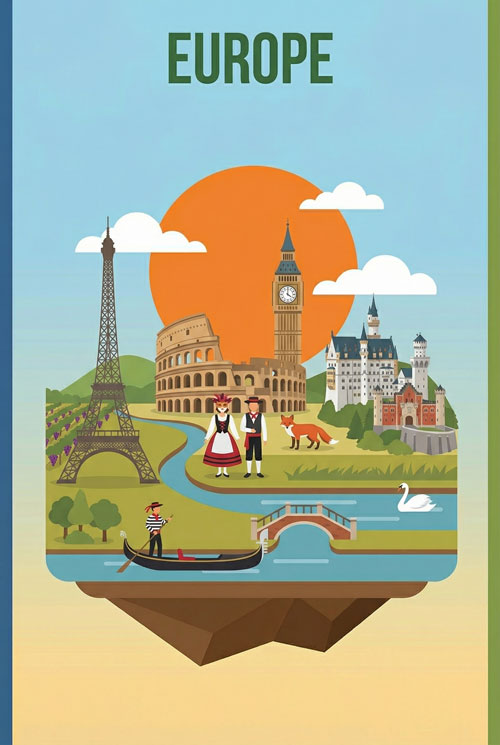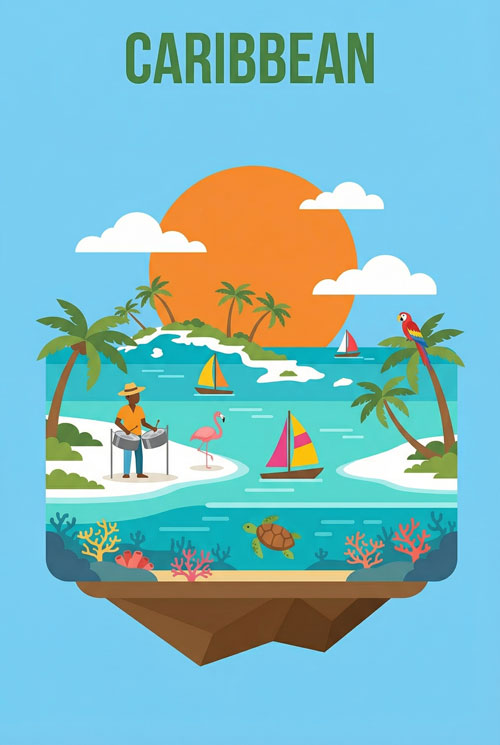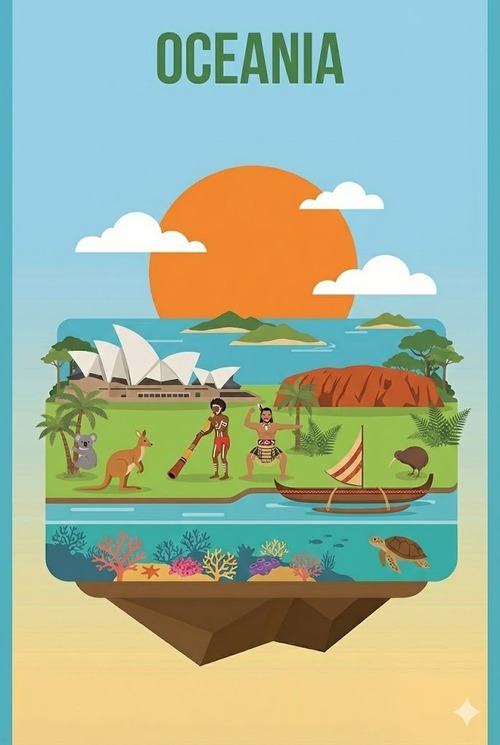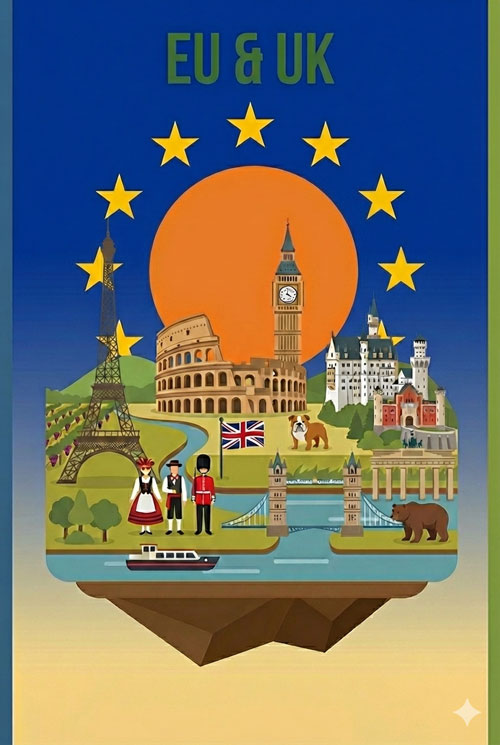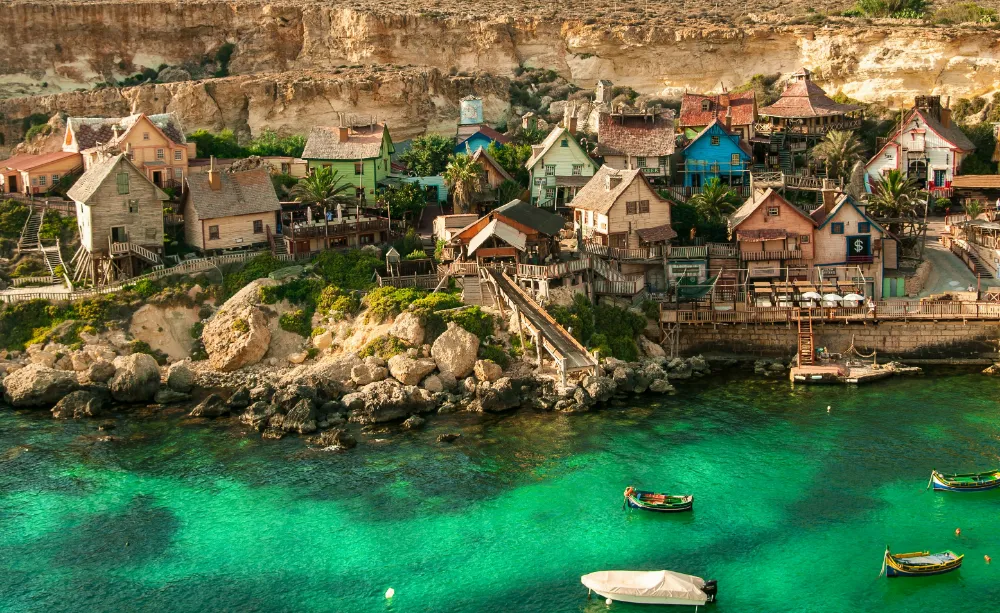Best Time To Visit
The Best Time to Visit Malta: Full Guide & Quiz
Why Malta? And Why Timing Your Trip Matters
So, when is the best time to visit Malta? For a perfect mix of great weather for exploring, warm seas, and fewer crowds, aim for late April to May or September to early October. These shoulder months offer a fantastic balance. Malta, a sunny gem in the Mediterranean, truly welcomes you all year round. Imagine 7,000 years of history carved into golden stone, stunning landscapes meeting blue seas, and a vibrant culture. It’s a place with something for everyone, no matter the season.
But “best” is personal. It really depends on what you want from your trip. Are you dreaming of sunny beach days? Or do you prefer exploring ancient sites in comfort? Maybe you love lively festivals or seek quiet, budget-friendly travel. This guide will help you find your perfect time for a Maltese adventure.
Let our quick quiz tell you the best time to travel to Malta…
Discover Your Ideal Malta Trip!
Answer a few questions to find the best time for your Maltese adventure.
1. What kind of atmosphere are you seeking for your Malta visit?
2. How do you feel about crowds?
3. What’s your ideal weather for exploring Malta?
4. Which Maltese experiences are high on your list?
Select up to 2 that are most important.
5. How important is budget in your planning?
Your Recommended Malta Trip Time:
Stay Connected in Malta with esim4.com!

Don’t let roaming charges spoil your Malta adventure. Get affordable and convenient eSIM data plans from esim4.com. Easy to set up, stay connected from the moment you land!
Explore Malta eSIM PlansMalta At-a-Glance: Find Your Perfect Time to Visit
This quick table helps you match your travel style to Malta’s seasons.
| Travel Priority | Recommended Months/Seasons | Key Considerations |
| Best Overall Weather | April – June, September – October | Pleasant temperatures for diverse activities, good balance of sun and comfort. |
| Sun & Beaches | June – September (peak heat July-August) | Warmest sea temperatures, abundant sunshine; peak crowds in high summer. |
| Sightseeing & History | April – May, October – November | Comfortable temperatures for exploring, fewer crowds than summer. |
| Hiking & Outdoors | March – May, September – November | Mild weather, blooming landscapes (spring), lush scenery (autumn). |
| Festivals & Events | June – August (village festas, music festivals), Feb/Mar (Carnival) | Experience vibrant local culture and international events. |
| Fewer Crowds & Tranquility | November – March (excluding festive periods) | Quieter attractions, more relaxed atmosphere. |
| Budget Travel | November – February (excluding festive periods) | Lower prices for accommodation and flights. |
See how summer beach time means more people? And quieter times might mean cooler weather? This shows why knowing your main goal is key. Let’s dive deeper.
Malta’s Climate: What to Expect Year-Round
Malta has a classic Mediterranean climate. Think long, hot, dry summers. Winters are mild with some rain. You’ll get lots of sunshine here, with over 300 sunny days a year. That’s a lot of sun!
But “sunny” feels different throughout the year. Summer sun can be very strong, making midday exploring tough if you’re not at the beach. Winter sun is gentler. It’s often perfect for seeing historical sites without overheating. Sometimes, a hot wind called the Sirocco blows in from the Sahara, mainly in spring and summer. This can make temperatures jump. Still, heavy rain is rare for most of the year. Your outdoor plans are usually safe, especially outside winter.
Visiting Malta by Season: A Deep Dive
Let’s look at each season. This will help you understand the real feel of Malta at different times. Each season offers a unique way to see the islands.
Spring (March, April, May): Enjoy Blooming Landscapes & Ideal Exploration
Spring in Malta is a beautiful change. The islands wake up from winter. Temperatures get nicer, from about 14-15°C (57-59°F) in March to a comfy 19-21°C (66-70°F) by May. It can even reach 25°C (77°F) as June gets closer. Rain becomes less common. By May, you can expect about ten hours of sunshine daily. This mix of warmth and sun makes spring great for exploring.
The countryside is stunning in spring. It turns lush and green. Wildflowers add amazing color everywhere. This “velvety green” look is very different from the sun-baked summer views. It’s a refreshing sight.
Crowds are usually moderate in spring. It’s a shoulder season. This means fewer tourists than summer. You might also find better prices for places to stay. This makes it perfect for sightseeing and hiking. Try coastal trails near Dingli Cliffs or the Fawwara Trail. You can do lots outdoors without the summer heat. The ancient city of Mdina looks magical in the soft spring light. You can visit temples like Ħaġar Qim and Mnajdra comfortably. Boat trips to the Blue Grotto are lovely too. Easter is a big celebration with processions and special figolli pastries. The Malta Marathon often happens in March.
One thing to note: the sea can still be cool for swimming in early spring. And that Sirocco wind might bring surprise heatwaves.
Summer (June, July, August): Experience Sun, Sea, and Festive Nights
Summer turns Malta into a lively, sunny hub. People come for long, hot days and warm seas. From June to August, it’s consistently hot, dry, and often humid. Temperatures are usually 25°C to 30°C (77-86°F). They often hit 32°C (90°F) and can even reach 38°C (100°F) in August. Rain is very rare; July often has none. Days are long and full of sun.
This is peak tourist season. Beaches and popular spots can be very crowded. Prices for hotels and flights are highest. The main draw of summer is the amazing beach weather. The sea is perfect for swimming, snorkeling, and water sports. Places like Golden Bay and Mellieħa Bay are busy.
But the daytime heat can be tiring. It’s often too hot for much sightseeing. One writer said during the day, “it’s really too sweaty to consider doing anything else” but go to the beach. Evenings are different. They come alive with energy. Summer is peak festival time. Village festas (feasts for patron saints) happen every weekend. Expect colorful processions, amazing fireworks, music, and lots of local food. Big music festivals like Isle of MTV also take place.
Autumn (September, October, November): Enjoy Warm Seas & Cultural Charm
Autumn in Malta is often called a “golden season.” Many think it’s the perfect mix. You get summer’s leftover warmth with more comfortable exploring weather. The intense summer heat fades, especially after mid-September. But the sea stays warm into October. September can still be quite hot, around 28°C (82°F) or 24.8°C (76.6°F). Things cool down through October and November. Early autumn days are still long and sunny.
Rain chances increase as autumn goes on. November can be one of the wetter months. Crowds get smaller after August. This makes autumn a shoulder season. Prices for stays can be better than in summer.
Autumn’s appeal is clear. The weather is often called “perfect”. You can enjoy beaches and sightseeing without “melting”. The sea is warm for swimming, especially in September and early October. Milder temperatures are great for exploring history. Think Valletta, Mdina, and ancient temples, with fewer tourists. A special event is the Birgu Lights Festival (Birgufest) in October. Birgu lights up with thousands of candles. It’s magical. Hiking is also good as landscapes get refreshed by rain.
Winter (December, January, February): Find Mild Escapes & Festive Cheer
Winter in Malta is different from summer. It’s generally mild, much milder than northern Europe. But it can be cool. Daytime temperatures are usually between 10°C and 15°C (50-59°F). February is often the coolest, around 12.4°C (54.3°F). December and January are often the rainiest. Even then, Malta usually gets about five hours of sun daily. Winter can be windy, especially January. The rains make the island green and lush.
This is the off-season. Tourist numbers are lowest. This means it’s the cheapest time to visit for stays and flights. Christmas, New Year, and Carnival are exceptions; they see more visitors and higher prices. The main pluses of winter are fewer crowds and a relaxed feel at sights. It’s great for those watching their budget or wanting peace. Exploring temples or Valletta is easier.
But there are downsides. Weather can be unpredictable. Rain and wind might change your outdoor plans. Daylight hours are shorter. Some tourist spots might have shorter hours or be closed. The sea is usually too cold for most to swim. Interestingly, not all buildings have central heating, so indoors can feel chilly. Still, winter has its own fun. Christmas and New Year are festive. The biggest event is Carnival, usually in February or early March. It’s a huge party with costumes, parades, and music, especially in Valletta and Nadur, Gozo.
Seasonal Showdown: Malta Throughout the Year
Here’s a quick comparison to help you choose.
| Feature | Spring (Mar-May) | Summer (Jun-Aug) | Autumn (Sep-Nov) | Winter (Dec-Feb) |
| Avg. Temp Range | 14-24°C (57-75°F) | 25-32°C+ (77-90°F+) | 18-28°C (64-82°F) | 12-17°C (54-63°F) |
| Avg. Rainfall | Low to Medium, decreasing | Very Low | Medium, increasing later | High (esp. Dec-Jan) |
| Crowd Level | Medium (Shoulder) | High (Peak) | Medium, decreasing (Shoulder) | Low (Off-Season) |
| Price Level | Mid-Range | Premium | Mid-Range to Lower | Budget (except festive periods) |
| Top 3 Pros | Pleasant weather, blooming landscapes, ideal for sightseeing/hiking | Best for beaches/swimming, lively festivals, long sunny days | Warm seas, comfortable sightseeing, fewer crowds than summer | Fewest crowds, lowest prices, lush green landscapes, Carnival |
| Top 3 Cons | Sea can be cool early on, Sirocco wind possible | Intense heat, very crowded, highest prices | Increasing rain later in season, some services reduce | Cooler, rain/wind likely, shorter days, some closures |
This table shows the trade-offs clearly.
Malta Month-by-Month: Your Detailed Calendar Guide
Let’s get even more specific with a month-by-month look. This helps fine-tune your plans.
- January in Malta: One of the coolest months, around 12-15°C (54-59°F). It’s also rainy but still has about 5 hours of sun daily. Few tourists mean lower prices. It can be windy. Best for: Saving money, quiet historical sites if weather allows.
- February in Malta: Temperatures stay cool, like January (12-15°C or 54-59°F). Rain might ease a bit. You might see early wildflowers late in the month. Carnival is the big highlight. Crowds are low. Best for: Carnival fun, saving money, early spring hints.
- March in Malta: Weather gets noticeably better. Temps climb to about 14-16°C (57-61°F). Much less rain. Good for hiking as landscapes are green. The Malta Marathon is often this month. Shoulder season begins. Best for: Hiking, outdoor fun, early spring views, Malta Marathon.
- April in Malta: A lovely month. Temps usually 15-18°C (59-64°F). More sun, often wildflowers. Easter celebrations are a big cultural event. Best for: Sightseeing, Easter culture, enjoying nature’s bloom.
- May in Malta: Weather gets warmer and sunnier. Temps from 19-24°C (66-75°F). Little rain, about 10 hours of sun daily. Sea starts warming for swimming. Great for all outdoor fun. Malta International Spring Music Festival might happen. Prime shoulder season. Best for: Outdoor activities, sightseeing, comfy beach days.
- June in Malta: Summer truly starts. Hot and sunny, temps 23-28°C (73-82°F). Sea is warm for swimming. Crowds build, but early June can be less busy. Summer festivals begin, like Lost & Found. Best for: Beach holidays, swimming, start of festival season.
- July in Malta: Expect very hot, humid weather. Temps 26-30°C (79-86°F) and often higher. Peak tourist season with crowds and prices. Almost no rain. Isle of MTV and Malta Arts Festival happen. Best for: Beach life, swimming, big music festivals, evening village festas.
- August in Malta: Usually the hottest month. Temps often over 27-32°C (81-90°F) with high humidity. Height of peak season, max crowds and prices. Village festas continue. Best for: Dedicated beach holidays, if you don’t mind heat and crowds.
- September in Malta: Summer weather continues, especially early on. Temps around 25-28°C (77-82°F). Sea stays very warm. Crowds start to reduce. Good balance for beach fun and easier sightseeing. Best for: Beach holidays with fewer people, swimming, late summer sun.
- October in Malta: Usually a very nice month. Temps around 20-24°C (68-75°F). Sea often still warm for swimming. Great for sightseeing and outdoor fun. The Birgu Lights Festival is a special event. Rain chances increase later in the month. Best for: Sightseeing, swimming, Birgufest, pleasant outdoor fun.
- November in Malta: Temps cool to 15-18°C (59-64°F). Rain is more common and can be heavy; it’s a rainier month. Far fewer tourists, better prices. Good for history if you’re ready for mixed weather. Best for: Saving money, quiet historical sites (with a backup plan for rain).
- December in Malta: Weather is cool, around 12-15°C (54-59°F). Typically rainy, like January. Christmas brings a festive mood. Tourist numbers are low outside the holiday week itself. Best for: Maltese Christmas traditions, saving money (outside Christmas week), indoor sights.
Pinpoint Your Ideal Maltese Getaway Based on Your Interests
Knowing the seasons helps. But what do you love to do? Let’s match your interests to the best times.
- Want Endless Sun and Perfect Beaches? The best time is late May to early October. July and August are hottest with the warmest sea. But they’re also most crowded. For warm sun, comfy sea, and slightly fewer people, try June or September. Golden Bay and Mellieħa Bay are top beach spots. You’ll avoid the biggest crowds but still get amazing beach weather.
- Love Hiking and Outdoor Adventures? Spring (March-May) and Autumn (September-November) are your best friends. Temperatures are pleasant. Landscapes are beautiful – wildflowers in spring, green scenery in autumn. Winter can work on dry days, but trails might be muddy. Skip summer for serious hiking; it’s too hot. Check out trails along Dingli Cliffs.
- Fascinated by History and Culture? The shoulder seasons are great. Think April-May in spring, and October-November in autumn. Temperatures are comfy for exploring ancient temples, Mdina, and Valletta. You’ll also find fewer crowds than in summer. Winter means the fewest crowds for a quieter look at sites like Ħaġar Qim. But winter weather is less certain. Mdina is said to be “especially captivating bathed in soft spring light”.
- Ready for Festivals and Lively Nights? Summer (June-August) is party central. Village festas happen every weekend. Big music events like Isle of MTV and Glitch Festival also take place. For a different kind of party, February or early March brings the amazing Malta Carnival. You’ll experience Malta’s vibrant spirit.
- Hoping to Travel on a Budget? The off-season months are your best bet. Generally, this is November to February. Skip the Christmas/New Year and Carnival weeks if you want the lowest prices. Accommodation and flights can be much cheaper. Attractions are also less crowded. This means you can enjoy more for less.
- Searching for a Quiet, Relaxing Trip? The off-season from November to March is perfect for escaping crowds. Late autumn (October, November) and early spring (March, April) are also good. They offer nice weather with far fewer tourists than summer. You’ll find a more peaceful Malta.
Planning Your Malta Trip: Quick Tips for Any Season
Whenever you go, these tips will help your trip run smoothly.
- Book Key Things Early It’s smart to book your stay well ahead. This is especially true for summer (June-August) or big festivals. Some attractions, like the Ħal Saflieni Hypogeum, need booking months in advance. They have very few tickets each day. This is super important. Don’t miss out! Booking the Gozo ferry from Valletta is also a good idea if you plan to visit Gozo, especially in busy times.
- Pack Smart for the Weather Layers are great for spring, autumn, and winter. Temperatures can change. For summer, pack swimwear, strong sun cream, a sunhat, and sunglasses. Mosquito repellent is good for warm evenings. Comfy walking shoes are a must all year. You’ll do lots of exploring. A light rain jacket is wise for autumn and winter.
- Know How to Get Around Malta has a good public bus system. It’s the main public transport and is not expensive. It reaches most parts of the islands. Think about how the season affects travel. Air-conditioned buses are great in summer. Some routes might be less frequent in deep winter.
Frequently Asked Questions (FAQs) about Visiting Malta
Here are answers to some common questions.
- Q1: When is Malta hottest?
- A: August is usually Malta’s hottest month, with high heat and humidity.
- Q2: When does it rain most in Malta?
- A: November to January usually see the most rain. December and January are often the wettest.
- Q3: Is Malta very busy in summer?
- A: Yes, July and August are peak tourist season. Beaches, sights, and towns get crowded.
- Q4: What are the “shoulder months” in Malta?
- A: These are months with a good balance of nice weather and fewer crowds. Think April, May (maybe early June), September, and October.
- Q5: Can I swim in the sea in Malta in October?
- A: Yes, the sea in Malta usually stays warm enough for swimming well into October.
- Q6: What’s Carnival in Malta like and when is it?
- A: Malta’s Carnival is a big, colorful party in February or early March. It has fancy costumes, float parades, and parties. Valletta and Nadur (Gozo) have especially lively celebrations.
So, What Really is the Best Time to Visit Malta?
The truth is, the “best time” to visit Malta depends on you. There’s no single right answer. Each season and month has its own special feel.
But if you want a bit of everything good? Late April through May in spring, and September through early October in autumn often come out on top. These times offer that sweet spot: lovely weather for sightseeing and outdoor fun, warm seas for swimming, and fewer crowds. It’s a great all-around choice.
Of course, other times are perfect for specific things. Summer is king for festivals and guaranteed beach sun, if you handle heat and crowds. Winter is great for saving money and quiet history exploring, plus fun events like Carnival.
Now you know Malta’s rhythms. You can pick the time that best fits your dream Maltese trip. The islands’ amazing history, beautiful views, and friendly welcome are waiting for you, any time of year.





